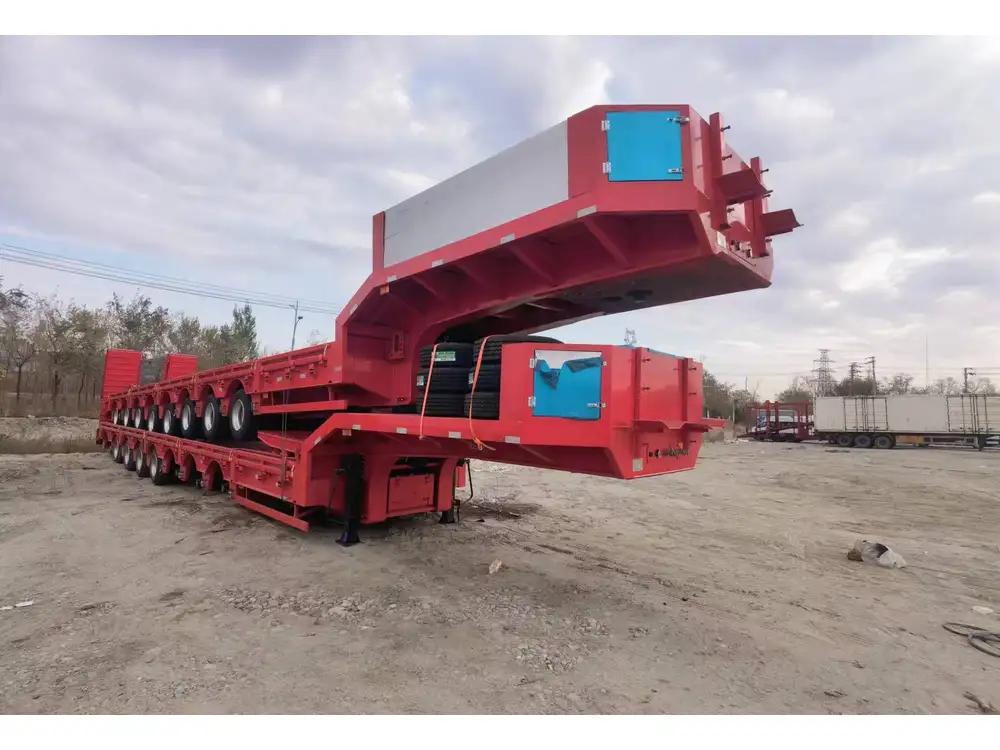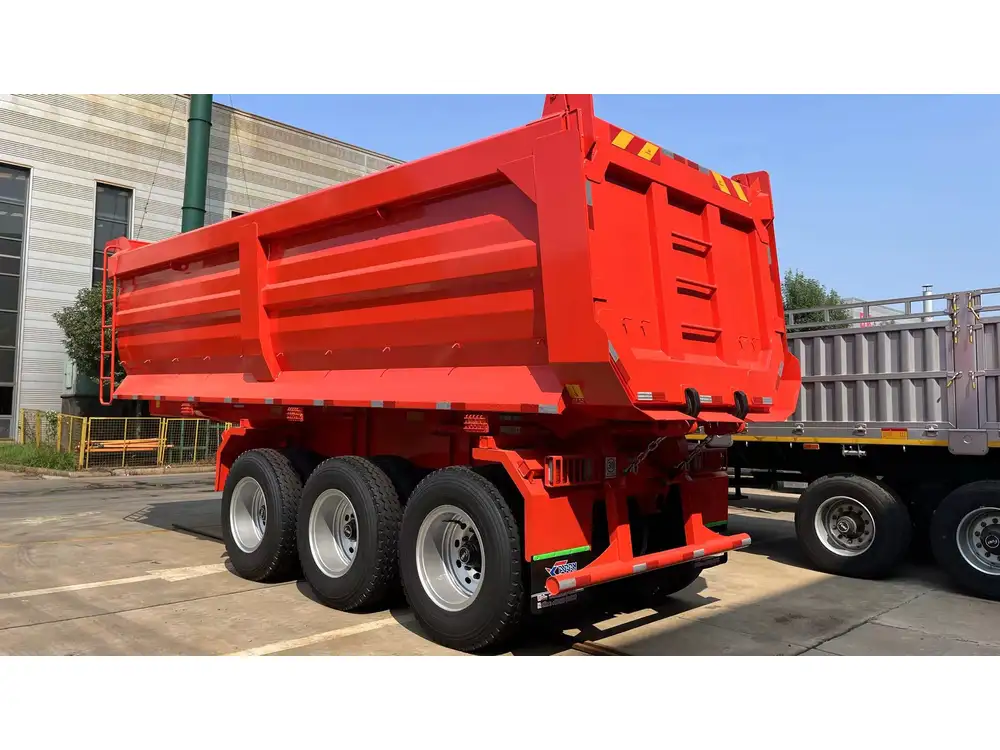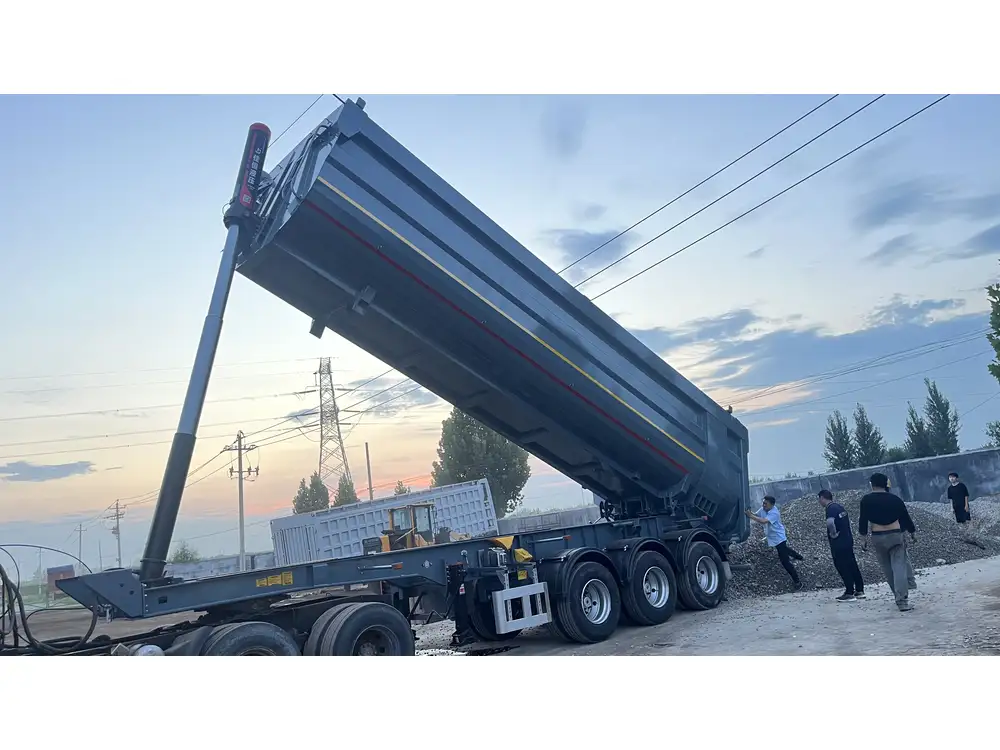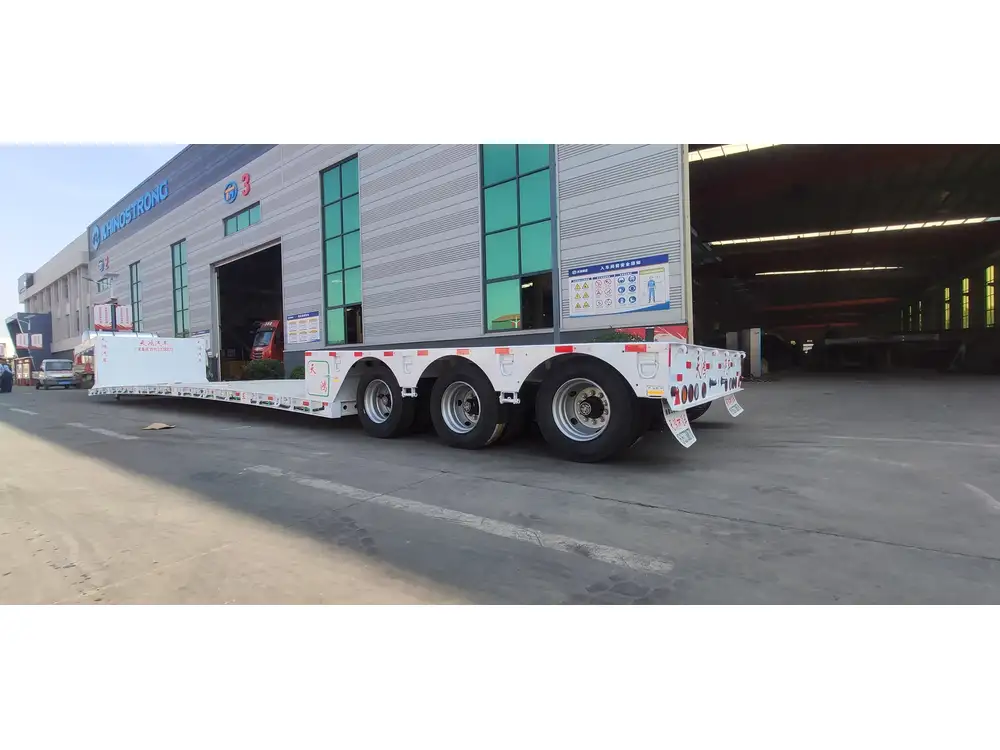When considering the purchase of a semi-trailer, several pivotal factors come into play, influencing pricing and ultimately the decision-making process. The semi-trailer cost varies significantly based on type, manufacturer, specifications, and additional features. This extensive guide explores the essential aspects surrounding semi-trailer pricing, providing potential buyers with valuable insights to navigate this complex market.
Understanding the Types of Semi-Trailers
Before delving into cost specifics, it’s crucial to understand the different types of semi-trailers available. Each type serves unique purposes, influencing their respective cost structures:
| Type of Semi-Trailer | Description | Typical Cost Range |
|---|---|---|
| Flatbed Trailers | These trailers have a flat surface for transporting goods without sides or a roof. Ideal for hauling oversized or heavy loads. | $15,000 – $40,000 |
| Dry Van Trailers | Enclosed trailers providing protection from the elements, suitable for transporting a wide array of goods. | $20,000 – $45,000 |
| Refrigerated Trailers | Also known as reefer trailers, these are equipped with refrigeration units for transporting perishable goods. | $25,000 – $60,000 |
| Tank Trailers | Designed to transport liquids, gases, or chemicals, often featuring specialized tank designs. | $30,000 – $100,000 |
| Lowboy Trailers | Ideal for transporting heavy equipment, characterized by a lower deck that allows for higher loads. | $25,000 – $55,000 |
| Car Haulers | Designed specifically for transporting automobiles, these trailers come with diverse loading configurations. | $28,000 – $50,000 |
| Step Deck Trailers | These have a step-down design, allowing for taller loads that need additional height clearance. | $25,000 – $50,000 |
Each category presents unique advantages and pricing tiers, which should be a fundamental consideration for potential buyers based on their specific hauling needs.
Key Factors Influencing the Cost of Semi-Trailers

1. Type and Design Specifications
As noted in the table above, semi-trailer types significantly influence pricing. Specialty trailers, like refrigerated or tank trailers, generally command higher prices owing to their specific design requirements and the technology involved in their manufacture. Custom-designed trailers for specialty loads may incur even higher costs, depending on the extent of the modifications.
2. Material Components
The materials used in constructing semi-trailers also impact pricing. Aluminum trailers, while often lighter and more corrosion-resistant, tend to be costlier compared to those made of steel. Buyers must balance weight, durability, and cost when choosing materials.
3. Manufacturer and Brand Reputation
Established manufacturers may offer semi-trailers at higher initial costs, but typically provide greater reliability and resale value. Brand reputation, service guarantees, warranties, and customer support also play critical roles in determining overall value.

4. Size and Dimensions
The size of the semi-trailer is another crucial factor influencing cost. Trailers come in standard sizes—typically between 28 to 53 feet in length. However, custom dimensions for specific loading requirements will raise costs substantially.
5. Condition: New vs. Used
The depreciation of equipment is an aspect that significantly impacts pricing:
New Trailers: Generally more expensive, they come with manufacturer warranties and the latest features. Prices range widely based on specifications.
Used Trailers: More affordable, with prices varying based on age, condition, and usage history. Inspecting used trailers is essential to gauge potential repair costs.
6. Additional Features and Accessories
Various features can alter the semi-trailer cost, such as:
- Axle Configuration: Additional axles increase load capacity but elevate cost.
- Braking Systems: Advanced braking technology can enhance safety but adds to initial outlay.
- Aerodynamics and Fuel Efficiency: Aerodynamic designs cost more initially but may offer fuel savings long-term.

Financing Options for Semi-Trailers
Investing in a semi-trailer often requires substantial financial planning. Here are several financing options available for potential buyers:
A. Purchase Outright
For those with sufficient capital, purchasing outright eliminates financing costs and simplifies ownership. However, it necessitates a larger upfront investment.
B. Leasing Options
Leasing provides an alternative for businesses not ready for full ownership. This approach allows for the use of semi-trailers without the burden of full purchase costs. Typical lease terms range from 3 to 5 years, and at lease-end, buyers have the option to purchase the trailer.

C. Loans for Equipment Financing
Many financial institutions offer loans specifically for purchasing trucking equipment like semi-trailers. These loans often feature competitive interest rates and repayment terms, enabling firms to invest in much-needed assets without immediate full payment.
D. Manufacturer Financing
Some manufacturers provide financing options for buyers, streamlining the purchasing process. This can include low-interest rates, deferred payments, and flexible terms.
Operating Costs Associated with Semi-Trailers
Understanding the upfront cost is important, but it’s equally crucial to consider operating costs associated with owning a semi-trailer:

1. Insurance Costs
Insurance is mandatory for semi-trailers, with costs varying based on the trailer type, load types, and driving history. Comprehensive insurance is advisable to cover potential damages and liabilities.
2. Maintenance and Repair Expenses
Regular maintenance is key to ensuring the longevity of semi-trailers. Budgeting for periodic inspections, tire replacements, and repairs is essential. A well-maintained trailer increases efficiency and reduces unforeseen expenditures.
3. Licensing Fees and Road Taxes
Semi-trailers require registration and licensing, which varies by state or region. Regular road taxes can also accumulate depending on the weight and usage of the trailer, thereby affecting the total operational expenditure.

4. Fuel Costs
Fuel efficiency is a significant factor when considering the overall operating cost as heavier loads consume more fuel. However, modern advancements in semi-trailer aerodynamics contribute to improved fuel economy, which can lower long-term costs.
Tips for Reducing Semi-Trailer Costs
To ensure a reasonable investment in semi-trailer purchases, consider the following strategies:
Research Thoroughly: Gathering extensive information on various brands and models can help ensure that you find the best deal. Attend trade shows, read customer reviews, and visit manufacturers’ websites.
Negotiate Pricing: Always attempt to negotiate the price with dealers. Many are willing to lower costs or offer additional features at little or no extra charge.
Consider Used Options: Look for reputable sellers offering used semi-trailers in good condition. Many nearly-new models are available at significant discounts.
Evaluate Leasing vs. Buying: Depending on business cash flow and financial strategies, opting to lease versus buy can provide flexibility while managing costs.
Common Misconceptions about Semi-Trailer Costs

Misconception 1: All Semi-Trailers Cost the Same
Due to the variety of types, specifications, and features, it’s crucial to evaluate all aspects before settling on a price. It’s a wide-spanning market.
Misconception 2: Used Trailers Are Always a Bargain
While the potential for saving is there, used trailers require diligent inspections to mitigate hidden repair costs.
Misconception 3: Additional Features Aren’t Worth the Cost
In many cases, additional safety features can lead to lower insurance premiums, and enhancements in fuel efficiency can offset higher initial costs over time.

Conclusion
Determining how much a semi-trailer costs involves much more than just an initial price tag. With numerous factors influencing pricing—from type and condition to financing options, operating costs, and misconceptions—buyers must do thorough research, evaluate their individual needs, and make informed decisions. Implementing strategic purchasing practices while considering long-term operational costs will lead to a smarter investment in the long run. When equipped with the right knowledge and preparation, entering the semi-trailer market can yield profitable outcomes for your business.



